With the second Tomorrowland film trailer release, the buzz is getting pretty loud – especially once the image below was included in the Japanese trailer:
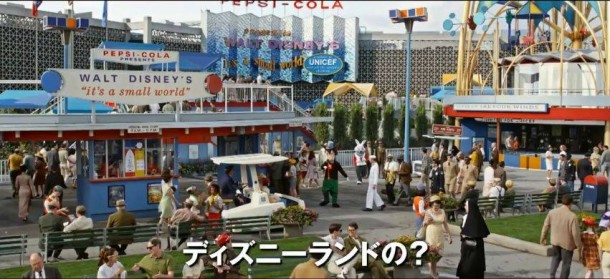
“Looking Back at Tomorrow” was a big part of Horizons, one of the greatest Disney theme park attractions of all time. Noe and I put our heads together (translation: he did 99.9%, but I did ALL of the rest) to take a look at how Disney has handled science fiction and science fact when it comes to space and time:
With the premiere of Miles from Tomorrowland on Disney Jr., I began thinking about Disneyland and all of the space attractions that have been featured since the park first opened. I then began thinking about Walt Disney World and the versions of Tomorrowland created for Paris and Hong Kong as well. All this thinking reminded me of how much the park has changed since my family first visited it many years ago. Disney fans are a diverse group but one thing we have in common is a sense of nostalgia. We tend to like the things that were, rather than the way they are now. Instead of lamenting the rides that are no longer there, or, in my case, the attractions that I never got a chance to experience, I decided to celebrate the future that the Disney company has been sharing with audiences.
For more than half a century, no company has been as optimistic about the future as the Disney company. The studio even managed to find a bright spot during an uncertain period of history. When the Soviet Union launched the satellite Sputnik into low Earth orbit in 1957 it created a “space race” against the USA. The two most powerful nations on Earth went from post-war productivity to Cold-War tenacity. Both countries became focused on space supremacy. National security, communications, spying and even modern warfare were all at stake. Whomever controlled space controlled the planet, or this was the assumption. It was a very stressful period in history that also saw tremendous leaps in technology. Many men and women worked tirelessly to help put a handful of people in orbit and an even smaller group on the Moon. Test pilots-turned astronauts became national heroes. This period of time was the subject of the 1983 film “The Right Stuff” directed by Philip Kaufman. Well before the Moon Landing, and even before Spunik, the Disney company was bringing space travel to audiences.
Many Disney artists were aboard the space projects and Ward Kimball, one of the “Nine Old Men,” was tasked with presenting the first glimpse into space travel. Man in Space allowed people to see what space suits, space stations and experimental craft would look like. The episode ended with an animated breakdown of the first reusable space exploration craft. It was a very awe-inspiring segment filled with dramatic music and a tense delivery from narrator Paul Frees. It inspired a generation of children to pursue the sciences and become the engineers and astronauts that would visit other planets.
While the design of the XR-1 was very post-modern the science was solid, the episode predicted the creation of the Space Shuttle by decades. When Disneyland first opened, Tomorrowland was interesting from an architectural perspective, but devoid of many of the attractions we now know it for. Walt and his team did the best they could at giving visitors a memorable experience. Two of the first attractions in the park were the Rocket to the Moon and Space Station X-1. In each attraction audiences were given the experience of leaving Earth as pioneering space travelers.
The World’s Fair had spurred Walt’s imagination to reach new heights. Working on his model railroad, the Carolwood Pacific, visiting Tivoli Gardens overseas and taking his daughters to Griffith Park had influenced his ideas for Disneyland. Working on the World’s Fair would inspire Walt to dream up Disney World, a place so massive that he could never run out of space to keep building. His goals were ambitious. He not only wanted to rectify his “mistakes” by building a new version of Disneyland known as the Magic Kingdom but he wanted to do one better by building a city of tomorrow. He studied urban planning, zoning, architecture and all sorts of material on construction and engineering in his final years. He proposed an Experimental Prototype City Of Tomorrow. It would be a place to live and work. Traffic would vanish as the entirety of this “Progress City” would be interconnected by Monorails, PeopleMovers and other transportation advancements. Traffic would actually be restricted to a lower level of the construction so that pedestrians could enjoy the outdoors. He envisioned a place where the industrial giants would host their research and development wings. It would be a sort of open exchange of ideas that would make each company advance at a faster clip. For visitors it would be an always evolving World’s Fair, one where technology would be the main attraction. It would change from year to year, faster than the company could update Tomorrowland. This EPCOT would inspire visitors to return to their work, their schools, their communities and elicit change for the better. Had Walt lived a few more decades, who knows how far he could have pushed his vision? Perhaps his model would be used not only around the Earth, but even in the planning for space colonies. One thing was certain, in the time he was alive, nobody was a greater proponent for science and education that Walt.
The challenge was difficult for the company: how would they be able to move forward without the chief visionary? How could they? Walt appreciated different periods of history and different geographies from around the world. Through the use of decorated sets and animatronic figures he found a way to present a story to audiences in his parks. He did not romanticize a culture but instead presented a highly-detailed caricature of it. In Frontierland, for example, he was able to frame the wild west, cowboys, natives and the pioneer spirit. In the early days he accomplished this by featuring pack mules, Native American and cowboy performers as well as some of his first audio-animatronic animals. He paralleled this in Tomorrowland where astronauts and engineers were the new pioneers and space was the wild frontier. Some of the early attractions had audio-animatronic people in Mission Control watching the audience. The Imagineers and artists that picked up the plans for Disneyland and Walt Disney World kept this tradition in mind. They did their best to tell a story and create a convincing experience. In the period prior to Walt’s death, the television and movies released on space exploration were few and far between; after his death the company began exploring these themes in earnest. The studio was able to look at space travel and science fiction through animated and live action features. The Black Hole, for example, was one of the darker films from the Disney library. It was essentially a retelling of Moby Dick, but with the Black Hole serving in place of the white whale. Other films were much more fantastic, like Flight of the Navigator, or predicted the space race, like the Rocketeer. The animated movies Lilo and Stitch and Treasure Planet were surprisingly well done takes on the alien genre. They reminded audiences of the heart that the classic films were famous for.
An old tradition remained. Engineers, scientists and even influential writers would be invited to contribute to new attractions and films. Tomorrowland continued to flourish and evolve. Rides would be replaced as technology advanced. In some cases the technology wasn’t as important as the storytelling element. Space mountain was an indoor, steel tube coaster. In 1977 the technology was well known to the company. It used some lights and simple projections in the dark to create the illusion of space. Where the ride excelled was in the storytelling. Audiences were playing the role of travelers shooting through the stars from a space port. This was explored through the queue and even show building. Walking around and under a huge spaceship in the queue, while listening to ghostly transmissions helped bring audiences into this reality.
In Florida there were plans for something even more spectacular than Space Mountain. EPCOT was to receive a Space Pavilion with an enormous craft almost as big as Spaceship Earth. The Titan 1 spherical probe would take dozens of guests into the furthest reaches of the galaxy. The ride system was similar to the classic Disneyland attraction Mission to Mars but the technology had greatly improved, the illusion would have been more incredible to audiences. Visitors would be sitting in terraced seats which were stationed on a cantilever, like the “Soarin” attraction, so that they would pitch and move. Enormous panels surrounding the Titan 1 in 360 degrees would project images of blastoff, orbit and even deep space. It would have put any other projection attraction to shame. Science fiction icon Ray Bradbury was a contributor to EPCOT Center, Spaceship Earth and the Space Pavilion.
It was just one of countless “plusses” that Disneyland received since the passing of Walt. The company continued to make hit films and television shows with space as a central theme. Audiences in Florida were shown the friendly side of alien lifeforms with the galactic entertainer Sonny Eclipse. That same year they also saw the fearsome side with the ExtraTERRORestrial Alien Encounter. Space was a wild frontier the likes of which were limited only by our imaginations. With the acquisition of Pixar, Buzz Lightyear the Space Ranger was brought into the Tomorrowland fold. Buzz was a perfect ambassador for space travel. He had become a positive symbol for science fiction and space exploration. He represented the post-war transition of American society. The cowboy was king during the early era of TV but the spaceman quickly replaced him after WWII. This was reflected in his relationship with Sheriff Woody. In 2008 a Buzz figure was taken aboard the International Space Station for six months. He was part of the Toys in Space program which studied the effects of weightlessness on different products. The astronauts shared their findings with schools and often live broadcasted the tests. This program began in 1985. When I was a kid, my aunt worked at TOMY toys. She would bring toys for my brothers and I to play test, including some expensive robots. Tomy made a number of wind-up figures, including a wind-up Space Shuttle; a few of these went to space. These were featured in the company newsletter. To celebrate the occasion, the company gave out Gold Space Shuttles to their employees. My brothers and I still have ours.
Timeline Disclaimer*
This is a list of television, film and theme park attractions with a space, science fiction or alien focus. Not every Disney Parks attraction is listed and not every attraction shows if it was replaced or by what. For example Buzz Lightyears Astro Blasters appeared in 1998 at Walt Disney World and then Tokyo Disneyland in 2004 before appearing in Disneyland in 2005. I placed it last on this timeline because it replaced the American Space Experience in Tomorrowland.


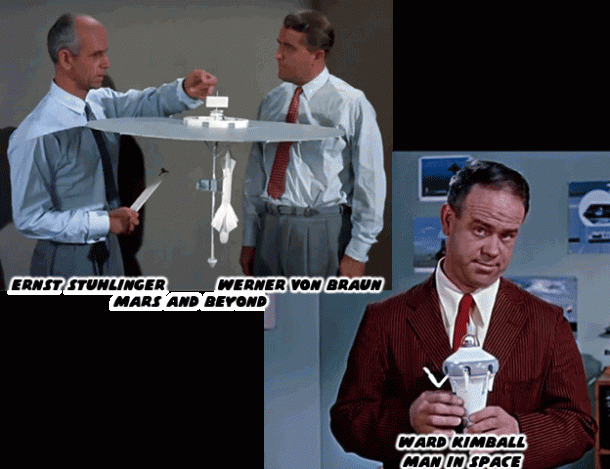
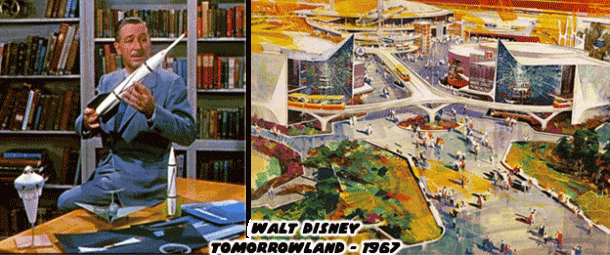
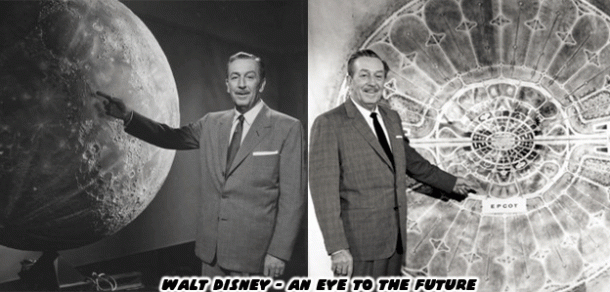
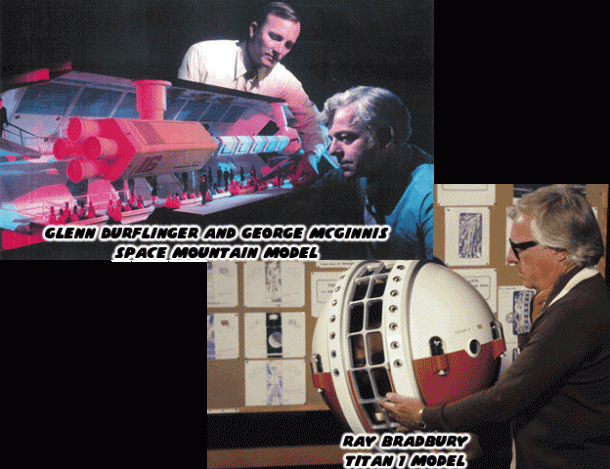
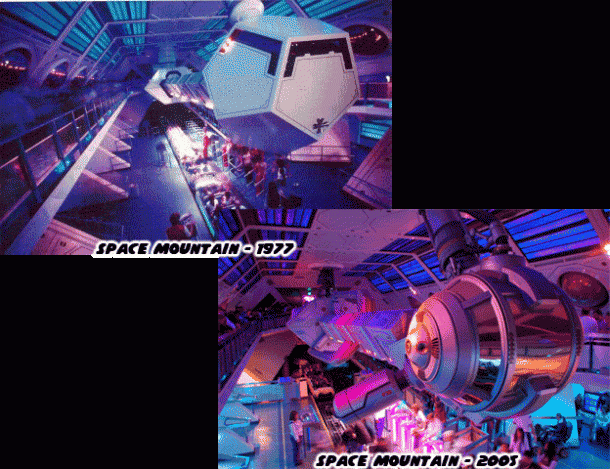

You must be logged in to post a comment.